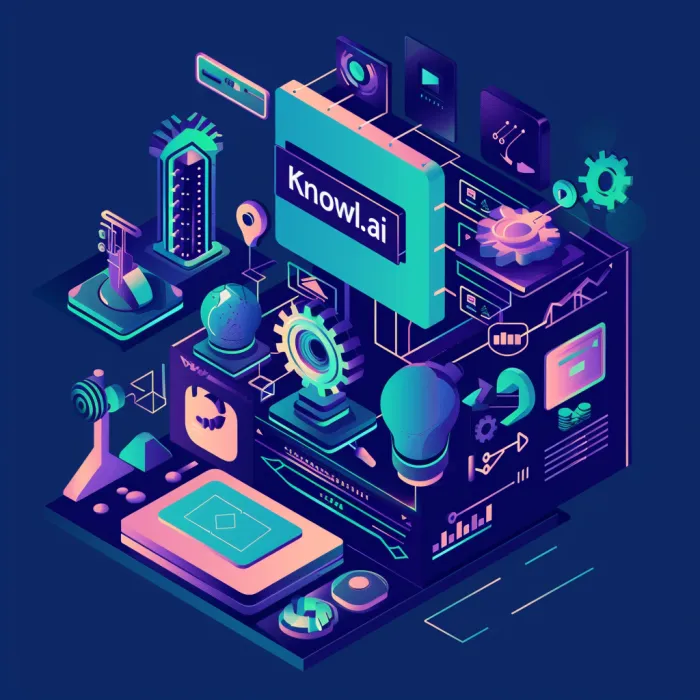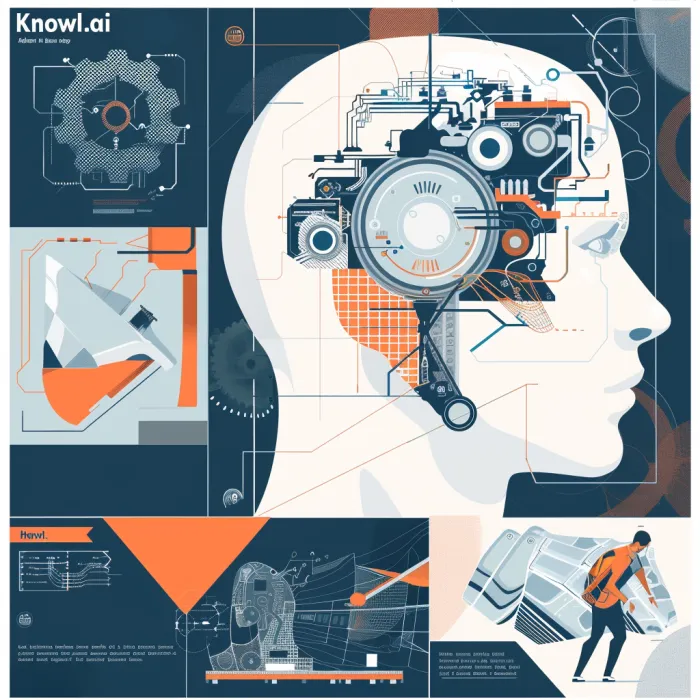Welcome to Knowl.ai, where we unravel the complexities of tech trends and innovations with a dash of fun and a lot of insights. Today, we're diving into the world of Composable Business—a concept that's reshaping how enterprises think about their architecture, agility, and adaptability in the face of rapid change. Whether you're an API developer, a product manager, or simply intrigued by the future of enterprise software, this guide will illuminate the path to understanding and implementing a composable business strategy.
What is Composable Business and Why Should You Care?
In an era where change is the only constant, businesses need to be built to adapt, pivot, and thrive. Enter the realm of Composable Business.
Understanding the Concept of Composability
Imagine your business as a Lego set, where each block represents a different business capability—marketing, sales, operations, etc. Composability is about assembling and reassembling these blocks to meet changing business needs efficiently. It’s a strategy endorsed by Gartner, focusing on leveraging modular business capabilities that can be quickly reconfigured to drive innovation and respond to market changes or disruptions like a pandemic.
Key takeaway: Composability turns your business into a versatile, adaptable entity ready to meet today's dynamic market challenges.
Benefits of Embracing Composable Business Architecture
Why shift to a composable business architecture? For starters, it boosts agility, allowing companies to innovate and respond to changes faster than ever. It fosters resilience, ensuring businesses can withstand and adapt to disruptions. Plus, it empowers organizations to capitalize on new opportunities with speed and efficiency, much like an agile start-up would.
Key takeaway: Composable business architecture is the secret sauce to achieving unparalleled agility, resilience, and the ability to leap at opportunities.

Key Elements of a Composable Enterprise
A composable enterprise rests on the pillars of modularity, autonomy, orchestration, and discovery. These elements work together to ensure that business capabilities are not only modular and interchangeable but also easily discoverable and can operate independently while being orchestrated as part of a larger, seamless operation. It's about creating an ecosystem where innovation is not just encouraged but facilitated at every turn.
Key takeaway: The composable enterprise is built on principles that ensure flexibility, innovation, and seamless integration of business capabilities.
How to Implement Composable Business in Your Enterprise?
Transforming into a composable enterprise might sound daunting, but it's a journey worth embarking on. Here’s how to start:
Building Blocks of Composable Business
The foundation of composable business lies in identifying and encapsulating your core business capabilities into modular, packaged business capabilities (PBCs). These are like self-contained units that contain everything they need to function, from data to processes to interfaces, enabling them to be reused, combined, and reconfigured to meet emerging business needs.
Key takeaway: Start by breaking down your business into modular capabilities that can be easily reconfigured and reused, laying the groundwork for flexibility and speed.
Principles of Composability to Follow
Embrace the four principles of composable business as outlined by Gartner: More speed through discovery, greater agility through modularity, better leadership through orchestration, and resilience through autonomy. Following these principles helps organizations remain fluid, ready to compose and recompose their operations to meet challenges head-on.
Key takeaway: Adhering to the principles of composable business ensures your enterprise remains agile, innovative, and resilient in the face of change.
Technologies Driving Composable Architecture
APIs play a crucial role in enabling composable business by allowing different software and services to communicate seamlessly. Alongside APIs, technologies like microservices architecture, cloud services, and enterprise application integration tools are instrumental in building a composable enterprise. These technologies ensure that your business capabilities are not just modular but also easily accessible and integrable across the organization.
Key takeaway: Leveraging the right technologies, especially APIs, is essential for enabling the seamless interaction and integration of business capabilities in a composable enterprise.
Embracing Agility and Resilience with Composable Business
In an ever-evolving business landscape, the ability to pivot and adapt is not just an advantage—it's a necessity. Let's dive into how composable business frameworks are leading the charge in creating flexible, resilient organizations.
How Composable Thinking Enhances Business Agility
Imagine a business that moves with the grace of a ballet dancer and the speed of a sprinter. That's what composable thinking offers. It's a mindset shift from rigid, monolithic architectures to dynamic, interchangeable building blocks. Composable thinking empowers businesses to rearrange and reorient resources as needed, ensuring they can not only withstand but thrive amidst market volatility and shifting customer values.
Key takeaway: Adopting composable thinking means businesses can rapidly adjust and innovate, ensuring they remain competitive and relevant.
Importance of Modularity and Resilience in Composable Architecture
The cornerstone of composable business lies in its modularity and resilience. Think of your business as a collection of LEGO blocks, each representing different functions and services that can be combined in various ways to meet current demands. This modularity, paired with the inherent resilience of being able to swap, add, or remove components without disrupting the entire system, is what makes composable architecture so powerful.
Key takeaway: Modularity and resilience are key in composable business, enabling organizations to adapt quickly and efficiently to changes and challenges.

Orchestration and Autonomy in Composable Business
Orchestration and autonomy might sound like terms from a symphony performance, but in composable business, they play a crucial role. Orchestration refers to how different parts of the business work together seamlessly, guided by a central vision. Autonomy, on the other hand, allows individual components or teams to operate independently, making decisions swiftly without bottlenecking through a central command. Together, they ensure that the business operates both cohesively and agilely.
Key takeaway: Effective orchestration and autonomy within a composable framework ensure that businesses can move quickly without sacrificing coherence or purpose.
Adapting to Market Changes through Composable Business
The true test of any enterprise is its ability to adapt to change. Composable business offers a blueprint for resilience and innovation, especially in times of uncertainty.
Responding to Disruption with Composable Technologies
In the face of disruptions—be it global recessions, technological shifts, or pandemics—composable technologies offer a lifeline. These technologies, from cloud computing to APIs, encapsulate business capabilities into flexible, reusable components. This not only speeds up response times to changes but also opens up new avenues for innovation and service delivery.
Key takeaway: Leveraging composable technologies allows businesses to respond more effectively to disruptions, turning challenges into opportunities for growth and innovation.
The Role of APIs in Encapsulating Business Capabilities
APIs are the unsung heroes of composable business, acting as the glue that holds these modular components together. They enable different parts of the business to communicate and share data seamlessly, allowing for the quick assembly of new services or adjustment of existing ones to meet changing demands. In essence, APIs are pivotal in making businesses more adaptable and agile.
Key takeaway: APIs play a critical role in composable business by facilitating seamless integration and communication between modular components, enhancing flexibility and innovation.
Ensuring Business Continuity in a Post-Pandemic World
The pandemic has underscored the need for businesses to be resilient and adaptable. Composable business models have emerged as a beacon of hope, offering real-time adaptability and resilience. By embracing principles of composability, businesses can rearrange their operations to not just survive but thrive, ensuring continuity and success in a post-pandemic world.
Key takeaway: Composable business models are essential for ensuring business continuity and success in the face of unforeseen global challenges, providing a framework for adaptability and resilience.
About Knowl.io
Introducing Knowl.io, the revolutionary AI-driven platform designed to transform how API documentation is created and maintained. Say goodbye to the painstaking process of manually updating specifications with each code change—Knowl.io does the heavy lifting for you. With seamless integration into your development workflow, Knowl.io ensures your API documentation is perpetually accurate, reflecting the latest updates in your codebase without the need for manual annotations or explanations.
At the heart of Knowl.io is cutting-edge AI technology that meticulously identifies endpoints, parameters, and behaviors, crafting detailed and up-to-date API documentation with comprehensive explanations. Trust Knowl.io to elevate your documentation process, making it more efficient and reliable than ever. Ensure your developers and stakeholders always have access to the most current and coherent API documentation with Knowl.io, where innovation meets simplicity.


